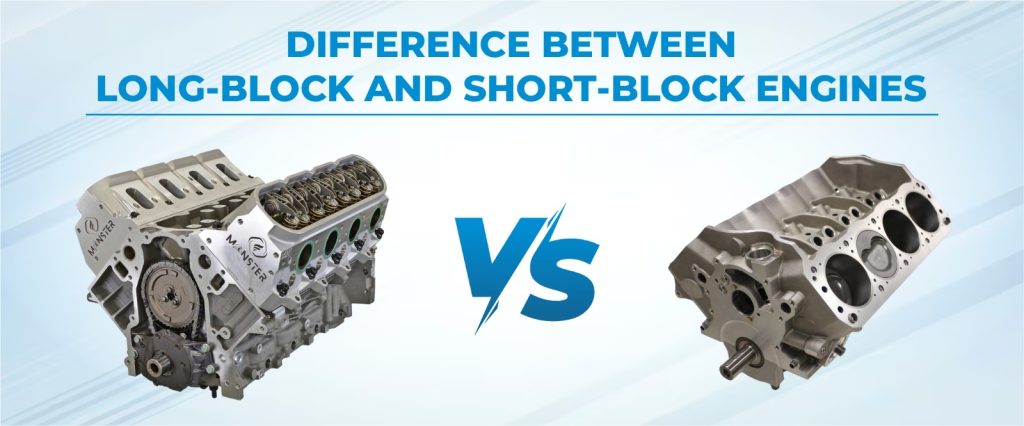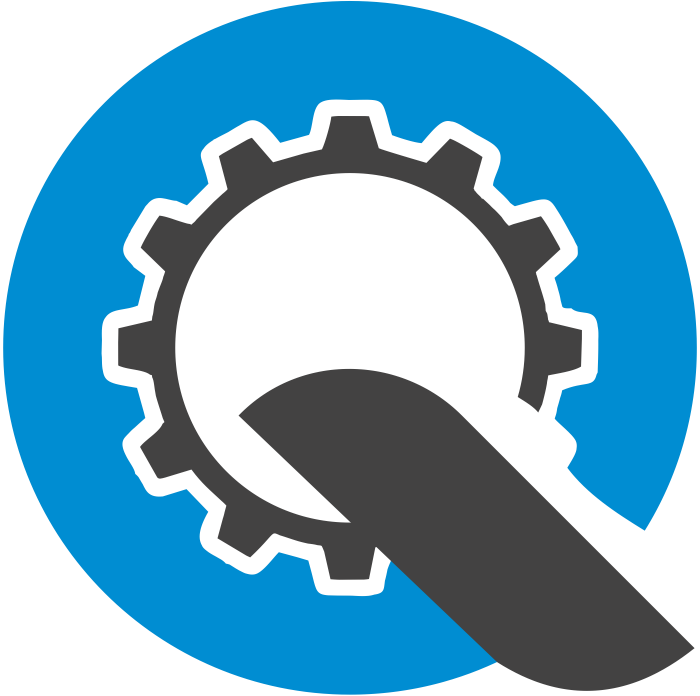
When replacing or rebuilding an engine, you’ll often come across the terms “long block” and “short block.” These terms describe different levels of engine assembly, affecting cost, ease of installation, and the number of components included. In this blog, we’ll explain what long-block and short-block engines are and how they differ in detail.
What is a Long-Block Engine?
A long-block engine is a more complete engine assembly that includes the short block along with additional components such as the cylinder heads, camshaft, and valvetrain. It is closer to a fully assembled engine but still requires some external components like the intake manifold, exhaust manifold, fuel system, ignition system, and accessories (alternator, starter, etc.) to be fully operational.
Components Included in a Long Block:
- Short Block: Includes the engine block, crankshaft, pistons, and connecting rods.
- Cylinder Head(s): Houses the intake and exhaust valves, valve springs, and combustion chamber.
- Camshaft(s): Controls the opening and closing of the intake and exhaust valves.
- Valvetrain: Includes components like pushrods, rocker arms, lifters, and valve springs.
- Timing Components: Includes the timing belt or chain, gears, and tensioners to ensure the synchronization of the camshaft and crankshaft.
- Oil Pump: Helps maintain proper lubrication and oil circulation.
Advantages of a Long Block Engine:
- Faster installation due to pre-assembled major components.
- Reduced risk of component mismatch since most parts come factory-matched.
- Ideal for those looking for a drop-in replacement with minimal additional assembly.
Disadvantages of a Long Block Engine:
- More expensive compared to short-block engines.
- Less flexibility for custom modifications.
What is a Short-Block Engine?
A short-block engine is a partially assembled engine that primarily consists of the engine block and its internal moving parts. It serves as the foundation for building a complete engine, allowing the user to install their own choice of cylinder heads, camshaft, and other external components.
Components Included in a Short Block:
- Engine Block: The main structure that houses the cylinders and internal components.
- Crankshaft: Converts the linear motion of the pistons into rotational motion.
- Pistons: Move up and down inside the cylinders to generate power.
- Connecting Rods: Link the pistons to the crankshaft and transfer motion.
- Bearings: Reduce friction between moving parts.
- Piston Rings: Help seal the combustion chamber and prevent oil leakage.
Advantages of a Short Block Engine:
- More affordable than long-block engines.
- Greater customization options for performance tuning.
- Ideal for those who want to reuse existing external components.
Disadvantages of a Short Block Engine:
- Requires additional time and expertise to install remaining components.
- Higher risk of incompatibility with old or new parts.
- More labour-intensive compared to a long block.
Detailed Comparison: Short Block vs. Long Block Engines
| Feature | Short Block Engine | Long Block Engine |
|---|---|---|
| Components Included | Engine block, crankshaft, pistons, rods, bearings, piston rings | Short block + cylinder head, camshaft, valvetrain, timing components, oil pump |
| Assembly Required | Many additional components need to be installed | Fewer additional components needed |
| Customization | High flexibility for tuning and modifications | Less customization, more standardized build |
| Installation Time | Longer, as extra parts must be installed | Shorter, as more parts are pre-assembled |
| Cost | Generally cheaper | More expensive due to added components |
| Best Suited For | Performance builds, customization, rebuilds | Quick replacements, factory-spec restorations |
Choosing Between a Short-Block and Long-Block Engine
When deciding between a short-block and a long-block engine, consider the following factors:
- Budget: If cost is a major concern, a short block may be a more affordable option.
- Skill Level: If you have the mechanical expertise to install additional components, a short block provides flexibility. Otherwise, a long block is more convenient.
- Customization Needs: If you want a fully customized engine build, a short block offers more options. If you prefer a ready-to-go engine, a long block is the better choice.
- Time Constraints: If you need a quick replacement, a long block is faster to install.
Conclusion
Both short-block and long-block engines have their unique advantages and disadvantages. A short-block engine is ideal for those who want a flexible, customized build, while a long-block engine offers convenience and faster installation. Understanding these differences ensures that you make an informed decision based on your specific requirements, whether for performance enhancement, cost savings, or ease of installation.


